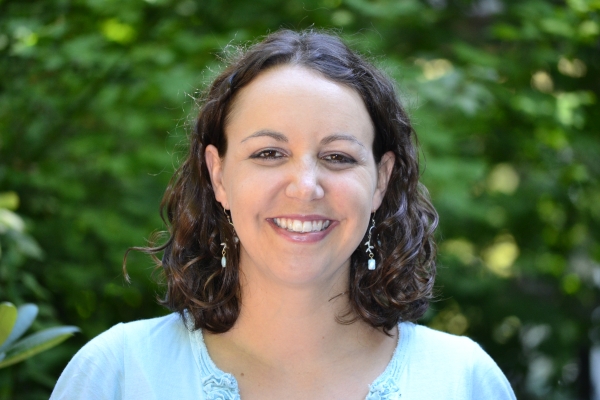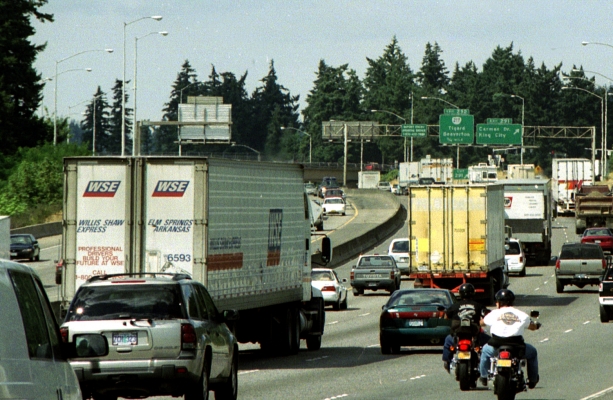States can reduce greenhouse gas emissions with a broad range of approaches, but none will have much luck without continued support from leaders and the public, according to NITC program research from the University of Oregon. In a conference paper for the annual meeting of the Transportation Research Board in Washington, D.C., a team led by Rebecca Lewis took a close look at the efforts West Coast states have made to reduce emissions from the transportation.
Cutting transportation emissions depends on three variables: vehicle efficiency, fuel carbon content and vehicle miles traveled, or VMT. The paper focuses on the last leg: cutting driving. While more efficient automobiles and alternative fuels have come on the market in recent years, a growing population and longer commutes can wipe out any emissions gains from shifts in fuel economy and fuel type.
Washington, Oregon and California have all passed statutes to cut statewide greenhouse gases below 1990 levels by 2020. The approaches vary in their targets, plans and strategies.
Lewis and her team present the research in a poster session Tuesday, Jan. 12 at the annual meeting of the Transportation Research Board in...
The USDOT’s Research and Innovative Technology Administration (RITA) 7th Annual UTC Spotlight Conference on Sustainable Energy and Transportation: Strategies, Research, and Data was held on November 8-9 in Washington, DC and featured OTREC energy related research from Portland State University and Oregon State University. This year’s conference focused on promoting dialogue and coordination among University Transportation Centers (UTCs), federal agencies, industry, and state and local agencies on research to address the complex and challenging issues concerning sustainable energy and transportation. The plenary and breakout sessions focused on research to improve energy efficiency, reduce dependence on fossil fuels, and identify of effective strategies to promote USDOT's strategic goals. As the U.S. moves toward a performance-based transportation bill, energy-focused environmental sustainability is expected to become one of the pillars against which success is measured if it is to become a national priority.
Dr. B. Starr McMullen, Oregon State University, took part on a plenary panel discussion on the interconnection of energy use, pricing and finance and highlighted two OTREC funded projects The Relationship Between VMT and Economic...
Read moreWith various governments encouraging people to drive less, economists have wondered if such goals can have the side effect of harming the economy. In most cases, the answer is no, OTREC researcher B. Starr McMullen concluded in a research report.
- Click here to read more about the research and to download the report.
It’s more than an academic question: driving and the economy do tend to rise and fall together. McMullen, a transportation economics professor at Oregon State University, examined the relationship between the two by looking at which happens first—a change in driving or a change in economic activity.
In general, economic growth leads to more driving, not the other way around, McMullen said. That’s particularly true for metropolitan areas, the very places most likely to pursue policies that reduce driving.
“The more economic activity you have, the more VMT [vehicle miles traveled] you’re going to have,” McMullen said.
On the other hand, if there are policies to reduce VMT and driving decreases, “you’re not going to have the economy fall apart," as some have suggested.
If a state sets a goal to reduce VMT or transportation...
Read moreWatch video
View slides
New FHWA VMT Forecasts and Implications for Local Planning
or
Post-Apocalyptic Zombies Ate Oregon’s Post-Recession, ATR Regression
Where: Room 204 of the Distance Learning Center Wing of the Urban Center at PSU
A summary of FHWA’s new national traffic trends assessment will be presented, including discussion of varied factors influencing forward-thinking forecasts. Examples of Oregon statewide vehicle miles travelled (VMT) and historic traffic trends from ATR stations in the Portland urban region and greater Willamette Valley will be highlighted. VMT, population and income data will be noted with implications on local transportation planning.
Andrew is an associate with David Evans & Associates, Inc., with over 28 years of experience in multimodal transportation planning with emphasis on sustainable community and Complete Street policy and plan development. He focuses on developing multimodal transportation plans with context-sensitive street standards and policies that implement enhanced bicycle and pedestrian use and circulation. His area of expertise includes measured pedestrian-access-to-transit connectivity, the implementation of...
Read more


